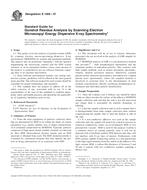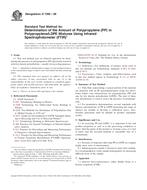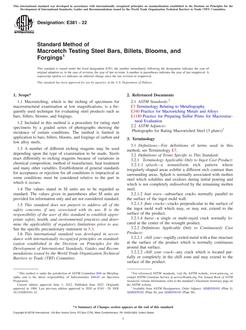1.1 This practice covers procedures for the characterization of subsurface soil conditions at a site as part of the process for evaluating suitability for an on-site septic system. This practice provides a method for determining the usable unsaturated soil depth for septic tank effluent to infiltrate for treatment and disposal.
1.2 This practice describes a procedure for classifying soil by field observable characteristics within the United States Department of Agriculture, Soil Conservation Service (SCS) classification system. The SCS classification system is defined in Refs (1-4), not in this practice. This practice is based on visual examination and manual tests that can be performed in the field. This practice is intended to provide information about soil characteristics in terms that are in common use by soil scientists, public health sanitarians, geologists, and engineers currently involved in the evaluation of soil conditions for septic systems.
1.3 This procedure can be augmented by Test Method D 422, when verification or comparison of field techniques is required. Other standard test methods that may be used to augment this practice include: Test Methods D 2325, D 3152, D 5093, D 3385, and D 2434.
1.4 This practice is not intended to replace Practice D 2488 which can be used in conjunction with this practice if construction engineering interpretations of soil properties are required.
1.5 This practice should be used in conjunction with D5879 to determine a recommended field area for an on-site septic system. Where applicable regulations define loading rates-based soil characteristics, this practice, in conjunction with D5925, can be used to determine septic tank effluent application rates to the soil.
1.6 This practice should be used to complement standard practices developed at state and local levels to characterize soil for on-site septic systems.
1.7 The values stated in SI units are to be regarded as the standard.
1.8 This standard does not purport to address all of the safety concerns, if any, associated with its use. It is the responsibility of the user of this standard to establish appropriate safety and health practices and determine the applicability of regulatory limitations prior to use.
1.9 This practice offers a set of instructions for performing one or more specific operations. This document cannot replace education or experience and should be used in conjunction with professional judgment. Nat all aspects of this practice may be applicable in all circumstances. This ASTM standard is not intended to represent or replace the standard of care by which the adequacy of a given professional service must be judged, nor should this document be applied without consideration of a project’s many unique aspects. The word “Standard” in the title of this document means only that the document has been approved through the ASTM consensus process.
Product Details
- Published:
- 01/01/2003
- Number of Pages:
- 17
- File Size:
- 1 file , 270 KB


